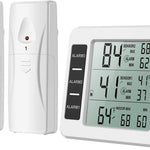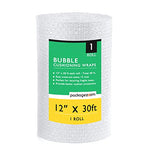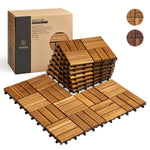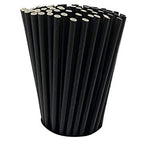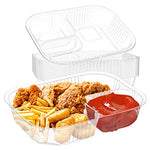You have no items in your shopping cart.
Serving food is not only about taste and presentation but also about maintaining high standards of food safety and hygiene. In the context of the National Health Service (NHS) or any food service environment, wearing the right gloves is crucial to prevent the spread of germs and ensure the well-being of consumers. In this article, we will delve into the topic of "which gloves to wear when serving food NHS," providing you with expert insights, best practices, and recommendations to ensure a safe and enjoyable dining experience for all. Let's explore the different types of gloves and their proper usage in the food service industry.
Types of Gloves for Serving Food NHS
In the food service industry, various types of gloves are available, each serving specific purposes. Here are the most common types of gloves used for serving food in NHS settings:
1. Latex Gloves
Latex gloves are a popular choice due to their flexibility, comfort, and tactile sensitivity. They are suitable for most food handling tasks, such as food preparation, serving, and cleaning.
2. Nitrile Gloves
Nitrile gloves are an excellent alternative to latex gloves, especially for individuals with latex allergies. They offer similar dexterity and durability, making them ideal for food service tasks.
3. Vinyl Gloves
Vinyl gloves are cost-effective and suitable for short-duration tasks. While they offer limited durability and sensitivity compared to latex and nitrile gloves, they still find applications in certain food service scenarios.
4. Polyethylene Gloves
Polyethylene gloves are lightweight and inexpensive, commonly used for single-use tasks like sandwich preparation or packing food items.
5. Cut-Resistant Gloves
For tasks involving sharp tools like knives, cut-resistant gloves provide an extra layer of protection. They are essential for tasks such as meat carving or handling kitchen equipment.
6. High-Temperature Resistant Gloves
When dealing with hot food items or working around ovens and stoves, high-temperature resistant gloves are vital to prevent burns and injuries.
7. Disposable vs. Reusable Gloves
Deciding between disposable and reusable gloves depends on the specific requirements of the food service setting. We will explore the advantages and disadvantages of each option to help you make an informed choice.
Best Practices for Using Gloves in Food Service NHS
Just wearing gloves is not enough; proper usage and adherence to best practices are equally crucial. Let's dive into the guidelines for using gloves effectively when serving food in NHS establishments:
1. Hand Hygiene
Before donning gloves, it is essential to wash your hands thoroughly with soap and water. Hand hygiene is the foundation of safe food handling and prevents cross-contamination.
2. Change Gloves Regularly
Frequently changing gloves is crucial to prevent the transfer of contaminants from one surface to another. Replace gloves between different tasks and when they become visibly soiled.
3. Avoid Touching Non-Food Surfaces
Gloves should only come into contact with food and food-contact surfaces. Avoid touching your face, hair, clothing, or any non-food items while wearing gloves.
4. Correct Glove Removal
Knowing how to remove gloves properly is as important as wearing them. Follow the correct procedure to avoid contaminating your hands during removal.
5. Single-Task Usage
Assign specific gloves for particular tasks to prevent cross-contamination. For example, use one pair of gloves for handling raw meat and another for serving cooked food.
6. Glove Size Matters
Ensure that gloves fit properly to avoid any accidental slippage or tearing during use. Gloves that are too tight may tear, while loose-fitting gloves can lead to difficulty in handling items.
7. Allergic Reactions
Be mindful of potential allergic reactions, especially to latex gloves. Offer alternative glove options for individuals with latex allergies.
8. Training and Education
Properly train all staff members on the correct usage of gloves and food handling practices. Regular updates and education on food safety protocols are essential.
FAQs About Using Gloves in NHS Food Service
Let's address some frequently asked questions regarding the use of gloves in NHS food service settings:
Q: Are latex gloves safe for everyone?
A: Latex gloves are generally safe, but some individuals may have latex allergies. In such cases, it is best to use latex-free alternatives like nitrile or vinyl gloves.
Q: How often should gloves be changed?
A: Gloves should be changed between different tasks, after handling raw food, and when they become visibly soiled. Regular glove changes are essential to maintain food hygiene.
Q: Can I reuse disposable gloves?
A: No, disposable gloves are designed for single-use only. Reusing them can lead to cross-contamination and compromise food safety.
Q: Do I need to wear gloves when serving pre-packaged food?
A: It is not mandatory to wear gloves when serving pre-packaged food, but proper hand hygiene is still essential to prevent contamination.
Q: Can I use the same gloves for handling money and food?
A: No, gloves used for handling money should not be used for serving food. Money can harbor germs, and cross-contamination must be avoided.
Q: What do I do if a glove tears during use?
A: If a glove tears, immediately remove it, dispose of it properly, and put on a new pair of gloves before resuming any food-handling tasks.
Conclusion
Maintaining the highest standards of food safety and hygiene is of utmost importance in NHS food service settings. Selecting the appropriate gloves and using them correctly is a crucial aspect of this process. In this comprehensive guide, we have explored the different types of gloves available for serving food and the best practices for their usage. Remember always to prioritize hand hygiene, change gloves regularly, and follow proper procedures to ensure the well-being of both your customers and staff.














